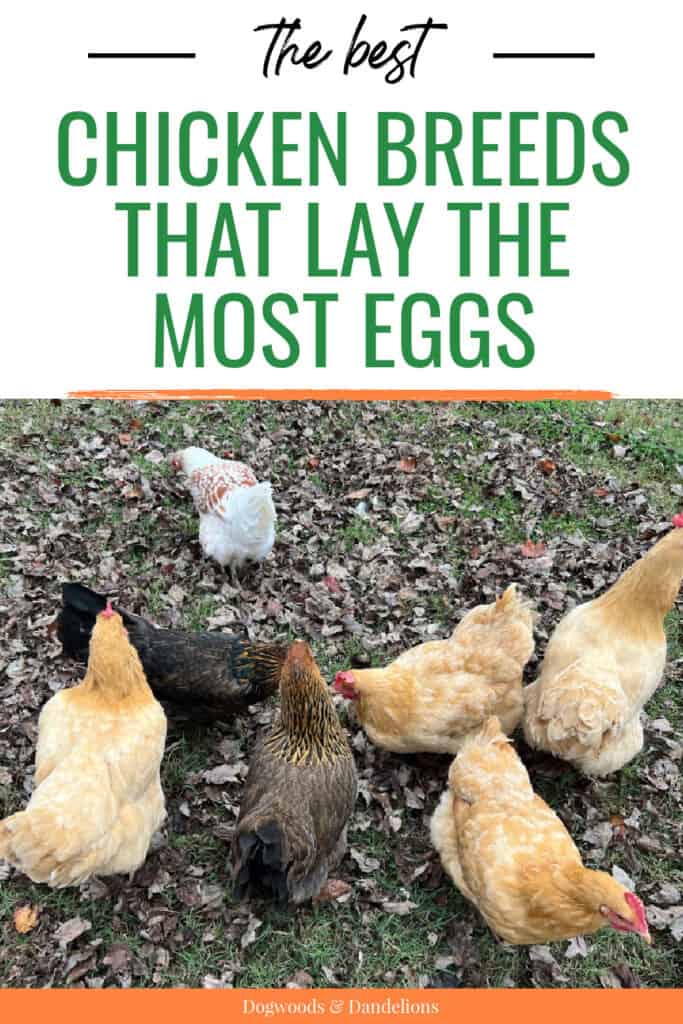Best Egg Laying Chicken Breeds
Inside: The best egg-laying chicken breeds that will provide your family with lots of eggs.
When purchasing chicks for your backyard flock or homestead, you need to decide what traits are most important to you.
Do you want heritage breeds to preserve the history of some of the older breeds?
Do you want friendly chickens that aren’t as likely to harm your children?
Are you looking for breeds that are dual-purpose so you can possibly harvest them for meat later?
Or are you looking for chickens that lay the most eggs because you don’t have a lot of room or would like some extra eggs to sell?
If you are looking for chickens that lay the most eggs, you’ll find the best egg-laying breeds in this post. You find brown egg layers as well as a few breeds that lay white eggs or colored eggs.
Affiliate Disclosure: Please note that some of the links in this article may be affiliate links and I may receive a small commission if you purchase something through a link. It will not change your cost. As an Amazon Associate, I earn from qualifying purchases. For more information, see my disclosures page.)
Barred Plymouth Rocks
Barred Plymouth Rock chickens, usually just called Barred Rocks are black chickens with white “bars” on their feathers. The chicks are usually easy to find from hatcheries or in local feed stores.
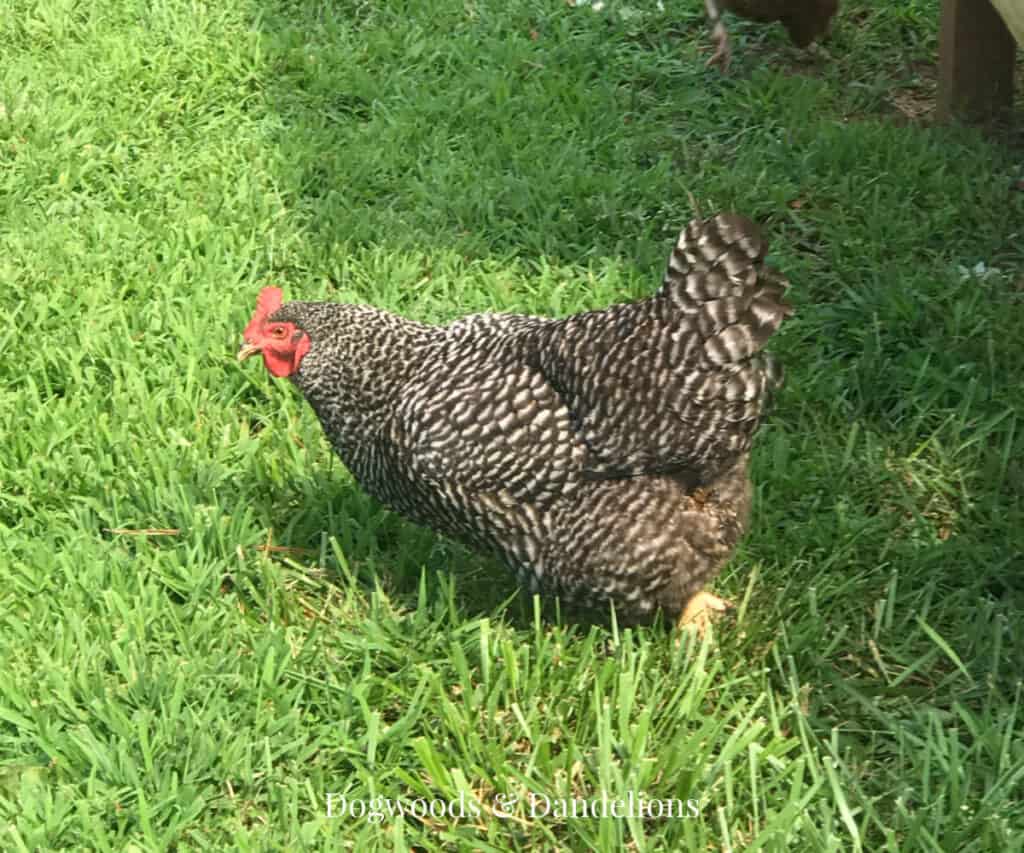
Most Barred Rocks are friendly chickens and are usually fairly quiet so they are a good choice for someone who wants to keep chickens in a suburban backyard.
This breed tends to be extremely healthy and tolerate confinement but loves to free range if given the chance. Each Barred Rock hen will lay about 200-250 light brown eggs per year.
Black Australorp
Black Australorp hens are friendly and make great pets. Their name is a combination of Australian and Black Orpington since they originated in Australia from the Orpington breed.
Australorps have black feathers that look shiny green in the sunlight. They are a heavy, quiet breed perfect for a small coop in a neighborhood.
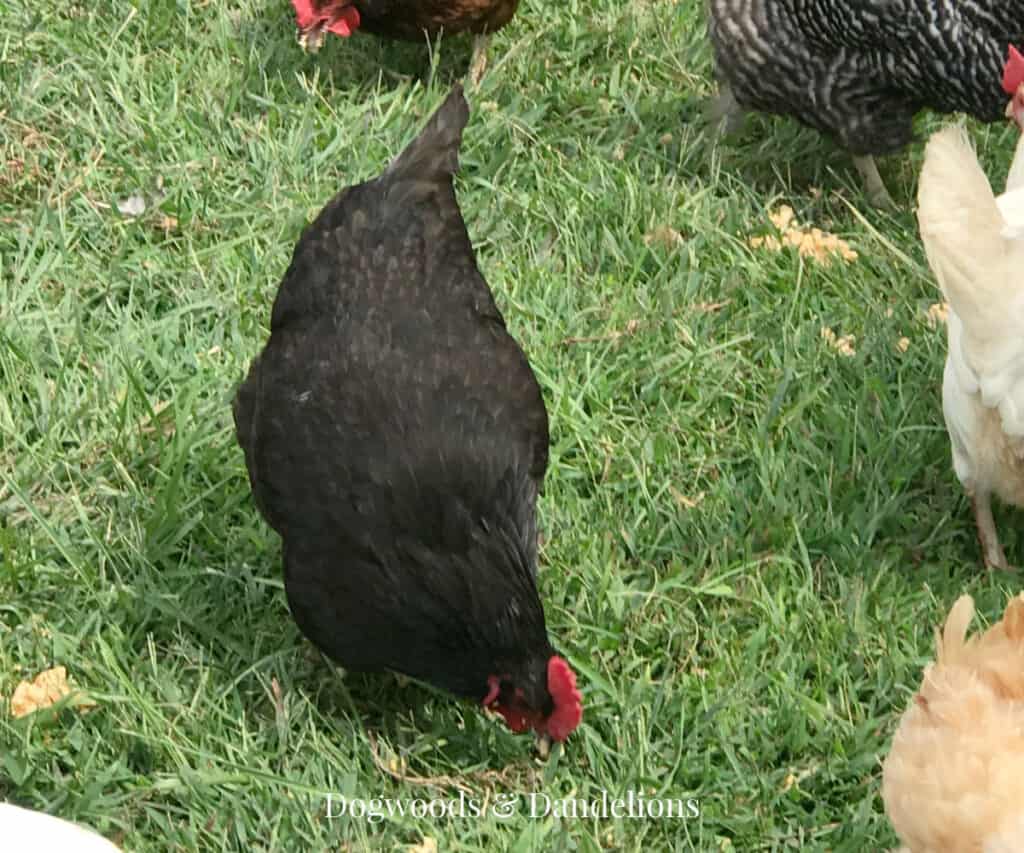
Australorps will provide you with a steady supply of brown eggs most of the year. They lay about 250-300 eggs per year. It is said that an Australorp hen holds the record for laying the most eggs (364) in a single year!
We’ve had many Australorps over the years and they have been one of my favorite heritage breeds.
Buff Orpingtons
Buff Orpingtons are a light brown “buff-colored” chicken that makes a great addition to your flock. They are mid to large-sized chickens that lay well (200-280 eggs per year), even through the winter.
Orpingtons are cold-hardy and considered a dual-purpose breed meaning they lay eggs well, but they are also meaty enough to butcher if you so choose. (There are other colors of Orpintons too – Black, White, Mottled, Speckled, and Lavender but the Buff tends to be the most popular.)
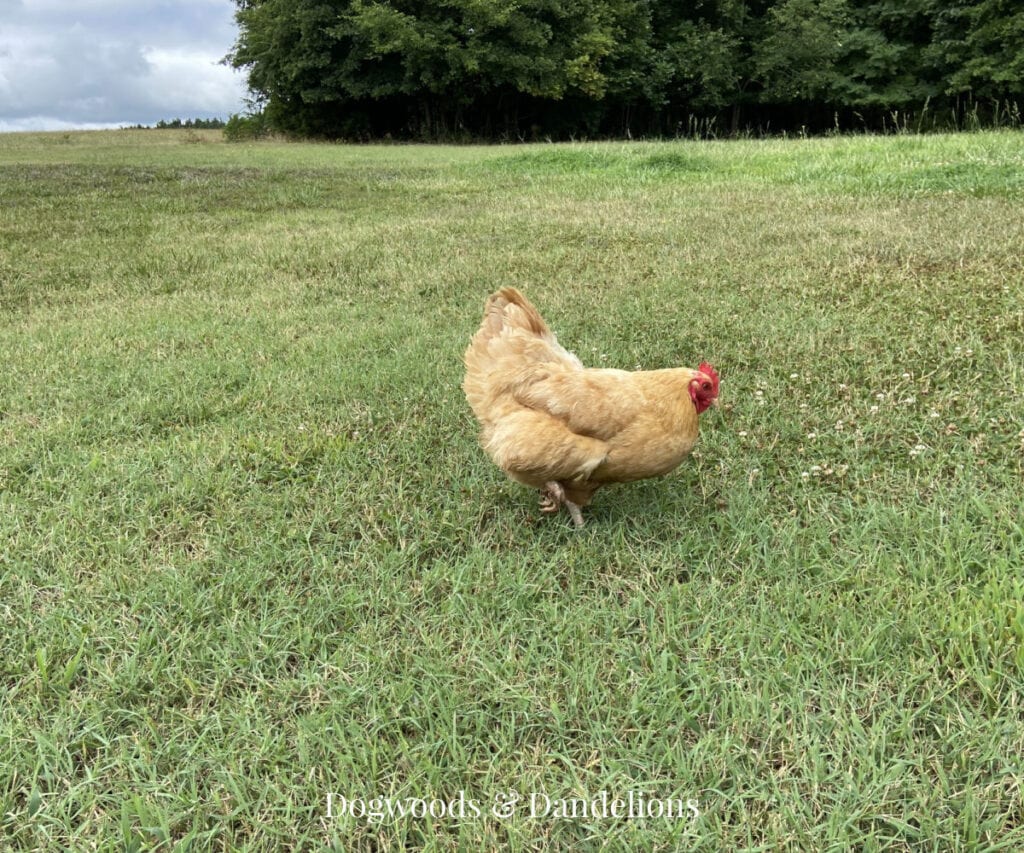
Buffs are generally a quiet breed so they work well in a neighborhood. They lay light brown eggs and are sometimes called the “golden retriever” of the chicken world because they are so friendly.
We love our Buff Orpington chickens and plan on always having a few in our flock.
California White
The California White breed is a cross between a White Leghorn hen and a California Grey rooster. The hens are said to lay even more eggs than White Leghorns, laying upwards of 300 per year.
They handle confinement well so they are a great choice for the backyard chicken keeper that doesn’t have a lot of room to let their flock roam. California White chickens are very hardy and tend to live quite a while.
They are active birds that usually start laying eggs a bit earlier than many other breeds.
You can see a picture of California Whites here.
Easter Eggers/Olive Eggers
Easter Eggers and Olive Eggers are not really true chicken breeds. They are actually a cross between Araucanas and any number of other breeds.
While some consider them the “mutts” of the chicken world, Easter Eggers and Olive Eggers are great chickens for a backyard flock as they are generally good egg layers.
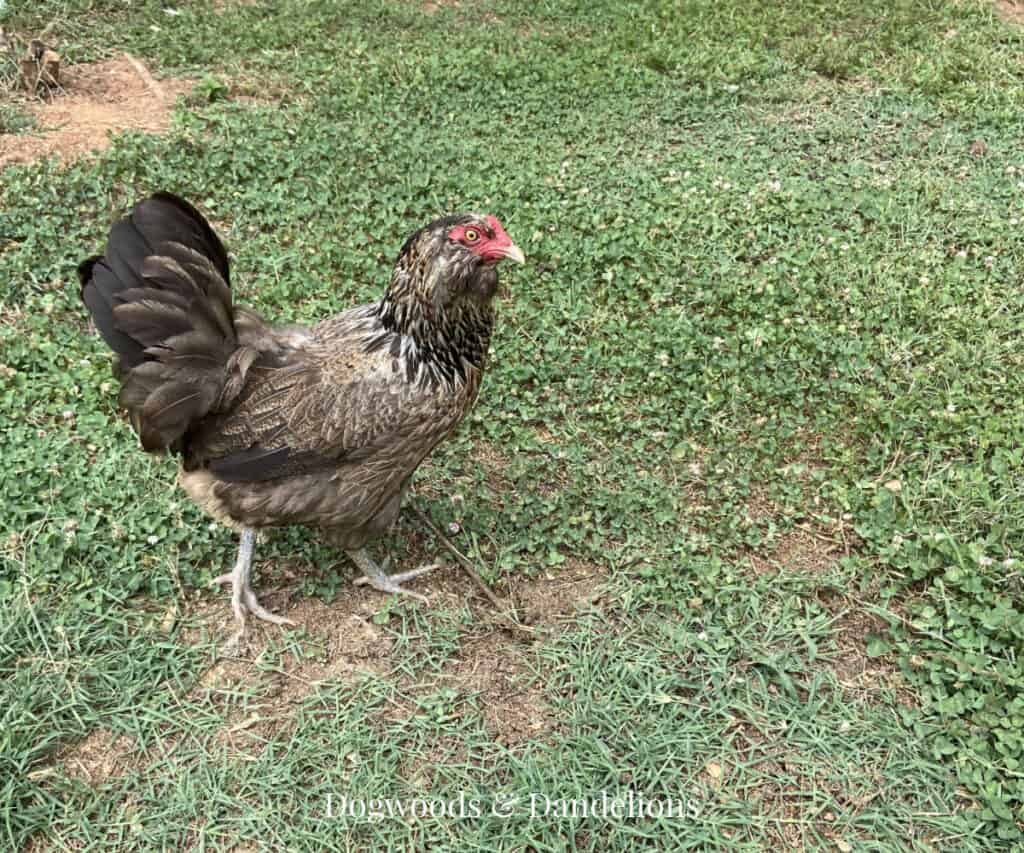
Since they are a hybrid chicken breed you never know exactly what the Easter Egger or Olive Egger chickens will look like. Some have muffs, while others don’t. They come in a variety of different colors ranging from gray to brown to pure white to mixes of these colors.
Easter Eggers and Olive Eggers are a smaller breed of chicken so while you can save a bit of money on feed they don’t make the best meat birds. They typically lay between 200 to 280 eggs each year.
Golden Comets
Golden Comets are a cross between Rhode Island Red chickens and White Leghorn chickens. They are often listed under other names such as Red Star, Golden Buff, Cinnamon Queen, and Gold Sex-Link.
Golden Comets are an excellent choice for the chicken coop because they lay a lot of eggs – up to 330 a year. This is a popular breed for small farms that want to sell eggs since they lay so well but they are great chickens for the backyard chicken keeper too.
However, the trade-off for their high egg production is that they often don’t live as long as other breeds. They are generally friendly and quite docile and rarely go broody.
You can see a picture of Golden Comets here.
Isa Browns
Isa Browns are good layers of large brown eggs. Like Golden Comets, this breed is a cross between a White Leghorn and a Rhode Island Red chicken.
They are a friendly breed so they make a great choice for first-time chicken keepers and they can handle confinement well. They aren’t a good breeding chicken though as the offspring can be prone to kidney ailments and won’t necessarily look like their parents.
Isa Browns were bred to lay lots of eggs (300+ a year) but this also comes with pitfalls. Many Isa Browns develop illnesses after 2-3 years. So if you want chickens that live a long happy life, this is probably not the breed for you.
You can see a picture of an Isa Brown here.
Jersey Giants
Jersey Giants are one of the largest egg-laying breeds around. They come in several different colors – black, blue, white, and a splash variety. Like the Black Australorp, their black feathers tend to take on a green hue in the sunlight.
Jersey’s are a great dual purpose breed and because of their size, each bird will provide a sizeable amount of meat. They are slow growing however and take almost 9 months to reach full size.
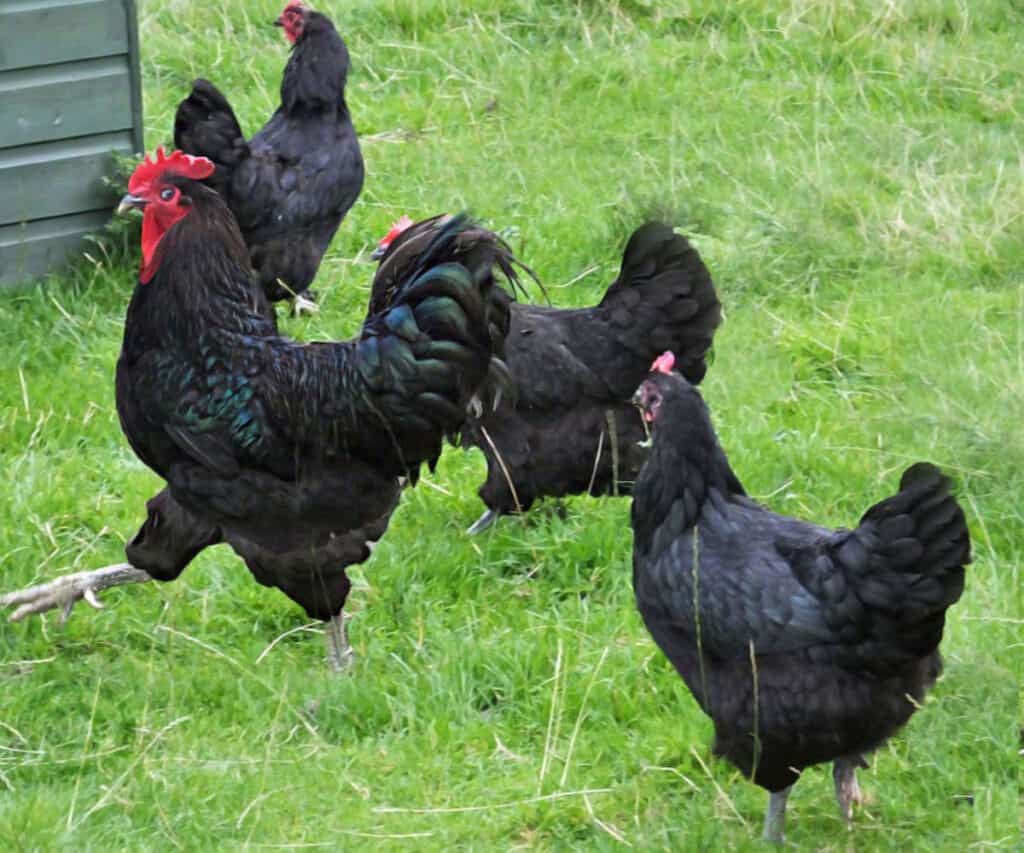
Like other breeds with large combs, care must be taken to prevent frostbite. However, Jersey Giants don’t like hot weather so it is best to keep them only in cool climates.
Because of their size, they do well against predators. Some even will fight against them. But if you buy a premade coop, it may have to be modified so the birds can stand up.
They are a calm and docile breed and love to forage, but they can be noisy so they may not be the best option for a neighborhood.
Jersey Giants typically lay 150 to 200 eggs each year.
New Hampshire Reds
New Hampshire Red chickens are great dual-purpose birds for a backyard flock. They look similar to Rhode Island Reds with their brownish-red feathers and single combs and were actually developed from Rhode Island Reds by choosing chickens that grew faster and feathered out earlier.
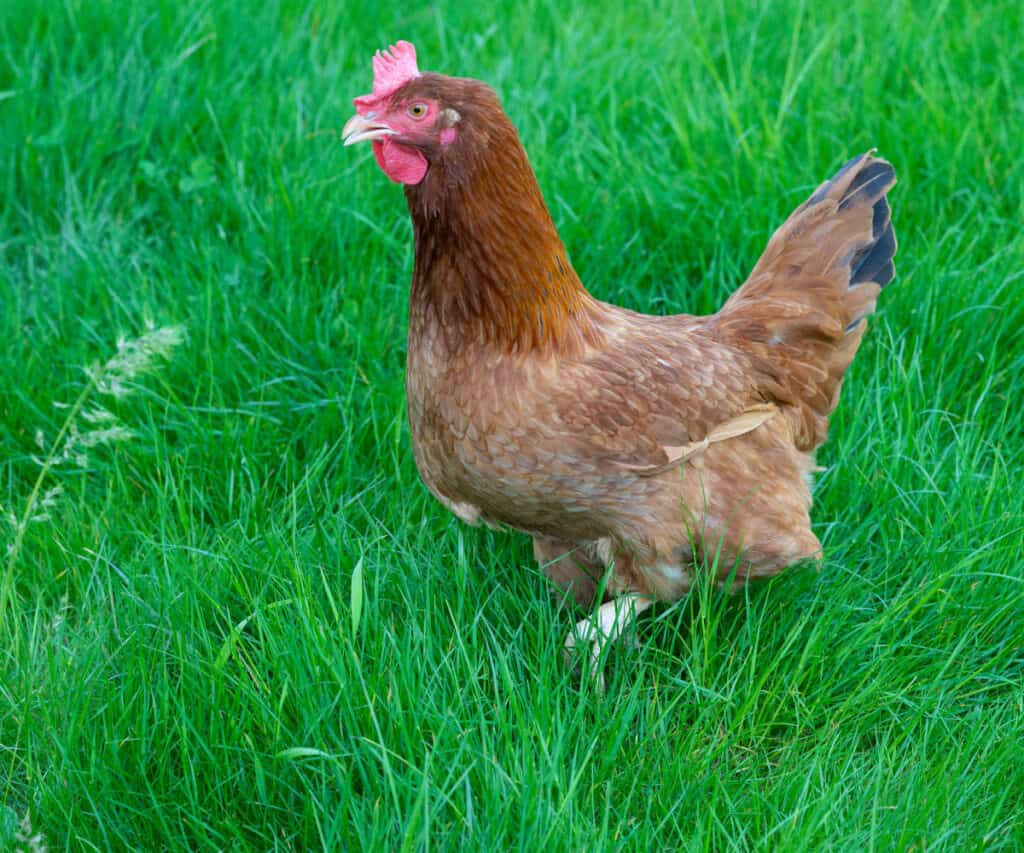
New Hampshire hens tend to go broody but they make excellent mothers. Most hens lay approximately 200 light brown eggs per year, but there are several strains that lay dark brown eggs.
New Hampshire Reds can be territorial over their food if they are in a mixed flock with other breeds. And while some New Hampshire’s are docile, others can be aggressive. It is best to keep your roosters away from children.
Rhode Island Reds
Rhode Island Reds are a good breed for the backyard chicken keeper who doesn’t have small children. They are a dual-purpose breed that is hardy in cold climates but they are actually a good choice for warm climates too.
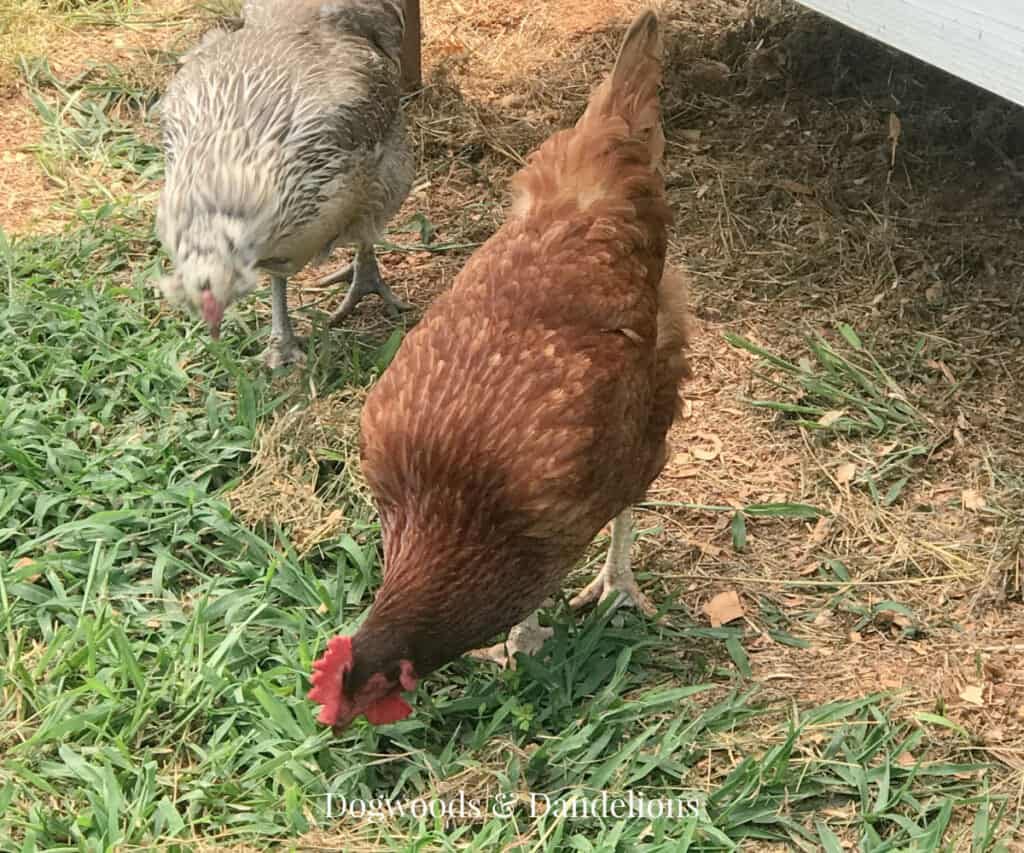
Rhode Island Reds have beautiful dark, rusty brown feathers and they lay lots of brown eggs, 200-300 per year. They are good foragers and the hens are not likely to go broody.
The one downside to this breed is that the roosters tend to be quite aggressive so they may not be the best choice if you have small children.
Sex-Linked Chickens
The majority of sex-linked chicken breeds lay brown eggs. Red Sex-Linked, Black Sex-Linked, and Amberlinks are all sex-linked chicken breeds. (A sex-linked chicken means that you can tell when the chick is born whether it is a rooster or a hen by the color of its feathers or some other identifying trait.)
Red and black sex-linked chickens lay large brown eggs. Amberlinks are a small to medium breed with medium brown-colored feathers that lay medium-sized brown eggs. All are good layers and lay lots of brown eggs each week. They usually lay between 250-300 eggs a year.
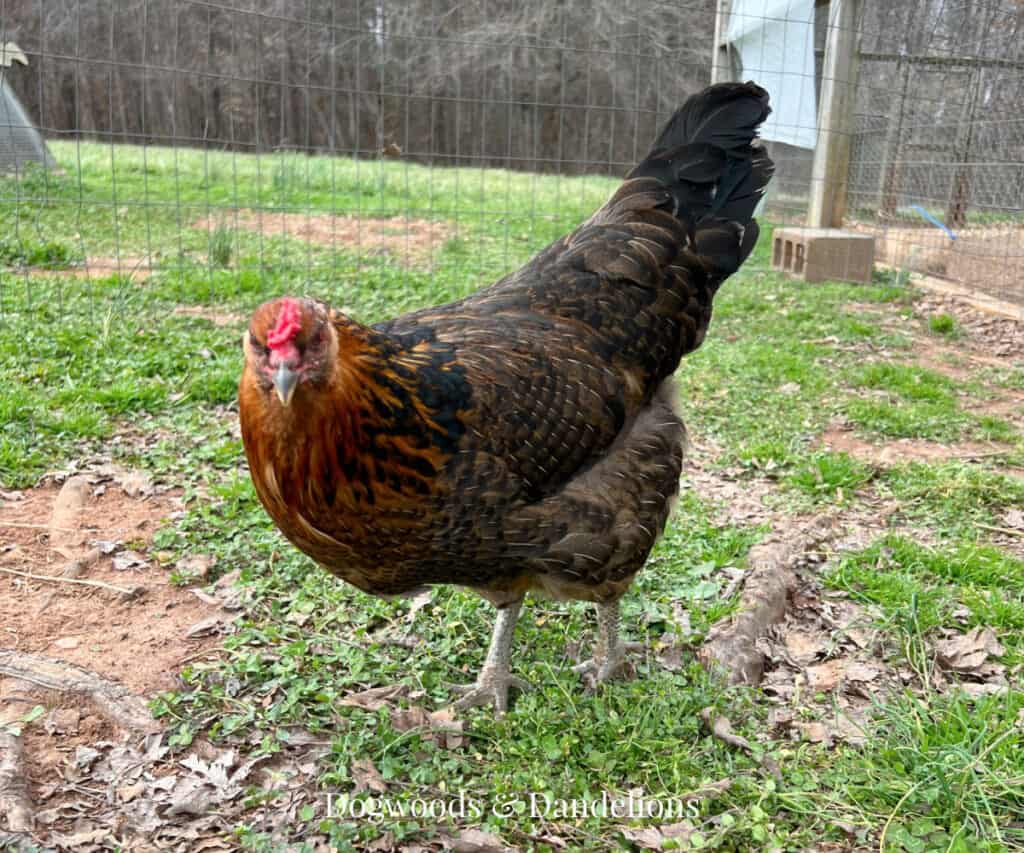
One reason many people choose sex-link breeds is that when you purchase your chicks, you can be reasonably sure you are getting all hens. When you live in a neighborhood that doesn’t allow roosters, this can be a great selling point.
It can be difficult to find people to take roosters off your hands should you accidentally get one.
Speckled Sussex
Speckled Sussex chickens are good egg layers of large brown eggs. They tolerate cold weather well so they are an excellent choice for cold climates. Sussex are a small chicken breed and good foragers so given room to roam, they can keep food costs down.
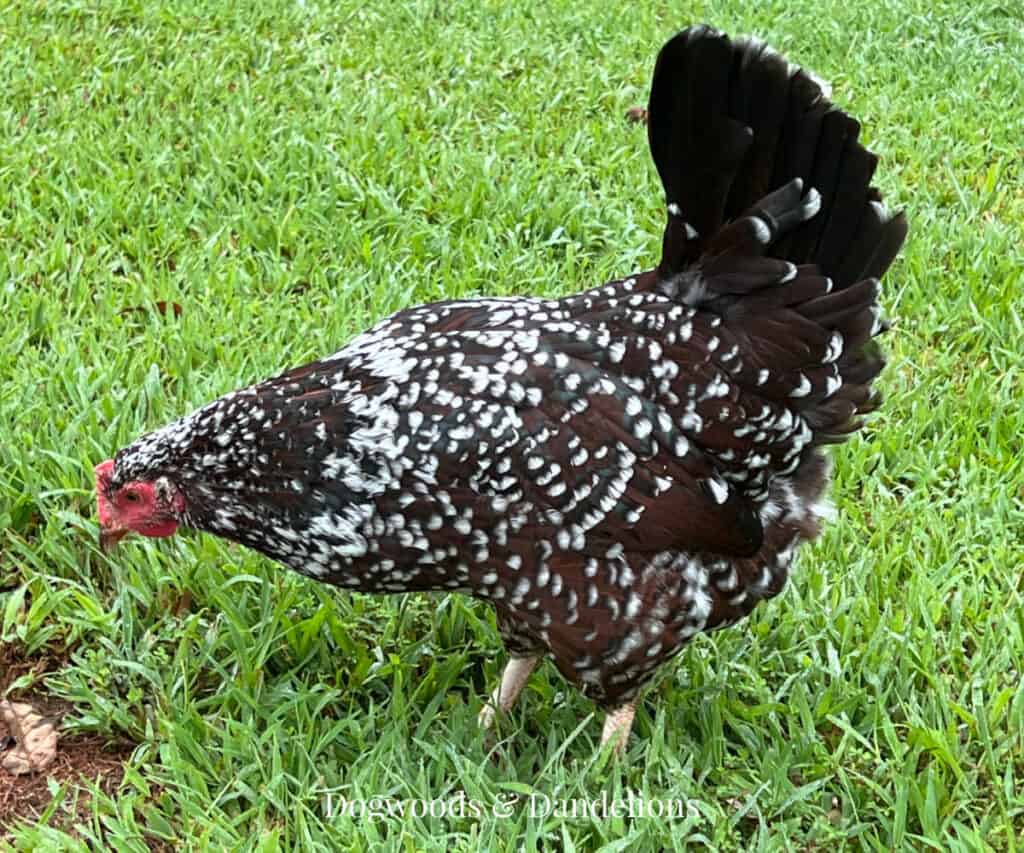
Speckled Sussex hens make great mothers if they do go broody. Most Sussex chickens will lay about 200-240 eggs per year.
White Leghorns
The White Leghorn breed is considered the gold standard for laying hens. This breed will lay between 280 and 320+ eggs per year and typically will lay well into their third and fourth years of life. Commercial egg farmers often use leghorns because they lay so well.
Leghorns are high-energy, flighty birds that like to keep busy. While some say they aren’t good foragers, I found quite the opposite to be true in our flock. Our White Leghorns were some of the first to find bugs to eat when we allowed them to free-range.
Leghorns are smaller birds that don’t tend to eat as much as larger breeds. This trait can save you money in the long run as you will likely get more eggs for the amount you spend on feed.
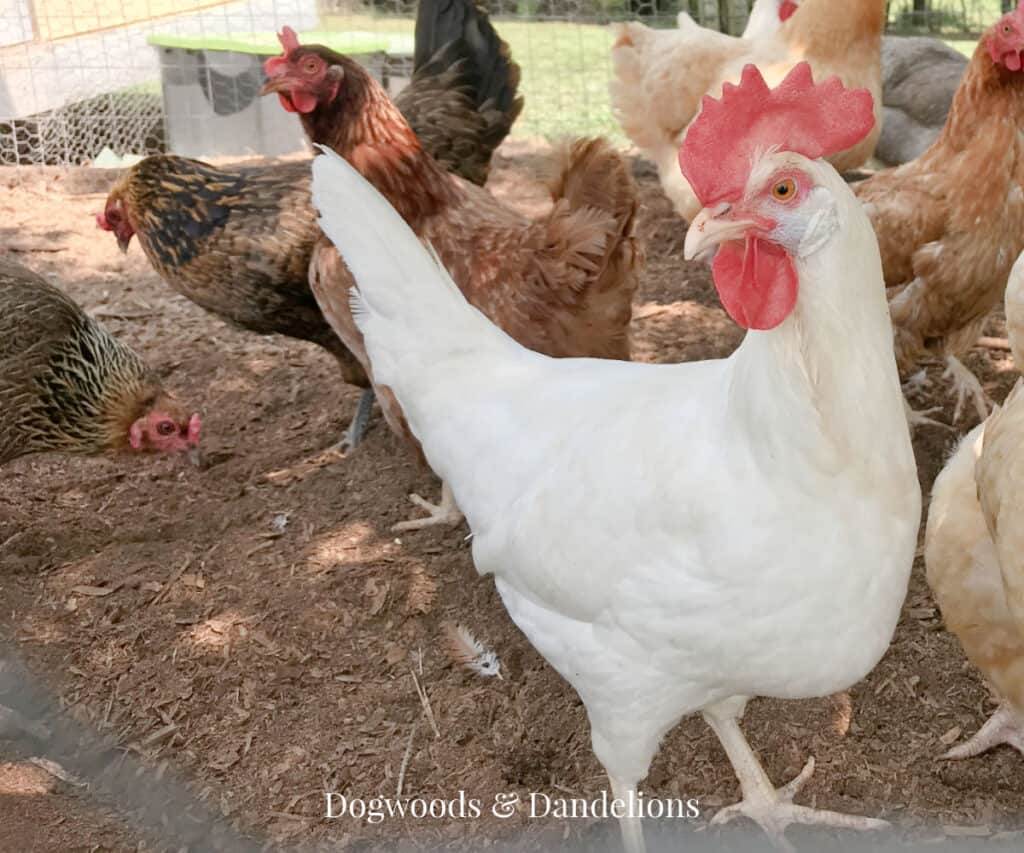
They aren’t an extremely friendly breed but aren’t usually aggressive either, so they do well in a mixed flock. (Our Leghorns tended to be scared of us and would run the other way when we came into the coop.)
If you have cold winters, you may wish to look for a strain that has smaller combs or even pea combs as the leghorns with larger combs are more susceptible to frostbite.
Wyandottes
The Wyandotte chicken is a beautiful chicken with several different varieties. Originally named the American Seabright, their name was changed to Wyandotte after a Native American tribe that lived near where they were created.
We have had both Silver-Laced Wyandottes and Golden-Laced and I personally think the Golden-Laced Wyandotte is one of the prettiest chickens around.
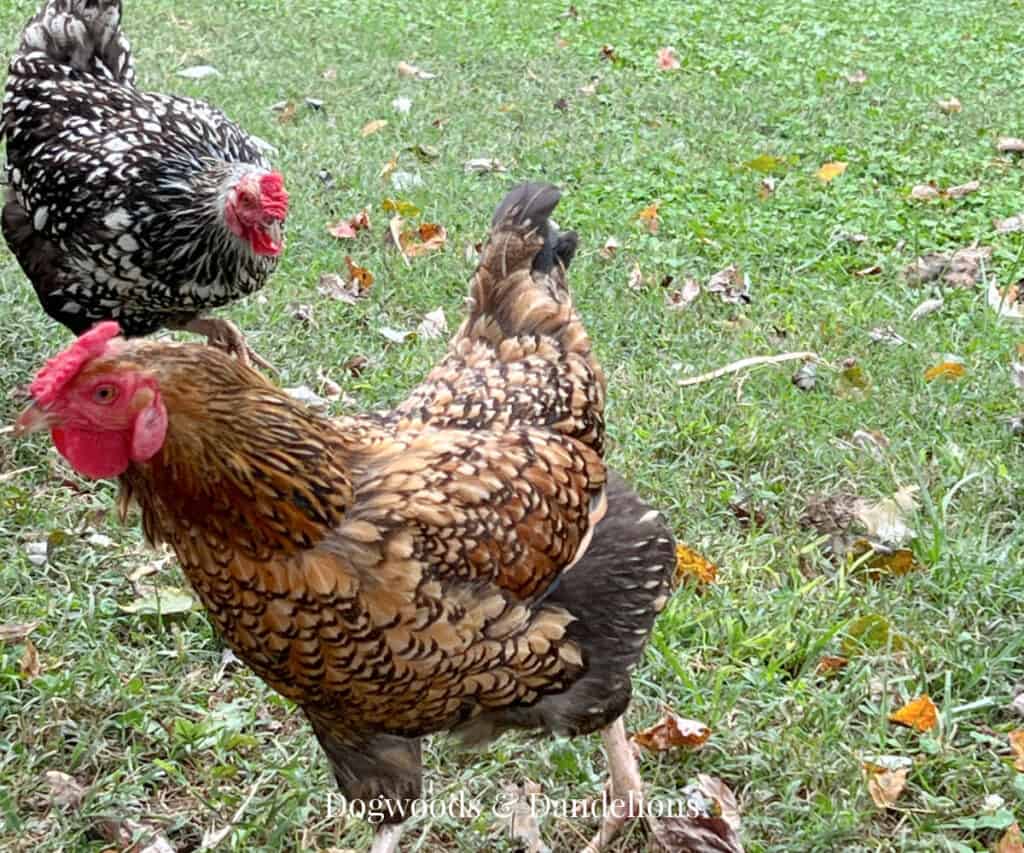
They lay about 4 eggs per week (200 per year) according to most sources. However, the Wyandottes in our flock have laid 6-7 eggs per week. They laid eggs all winter long! The only breed that we’ve kept that has laid more eggs is the White Leghorn.
I can’t say enough good things about this breed. They tend to be friendly birds so they would be great around kids and are definitely a good choice for your backyard flock.
So if you are looking for lots of fresh eggs from your backyard hens, these are the best chicken breeds that will give you the most eggs. Happy chicken keeping.
Related Posts
- How to Get Your Chickens to Like You
- Your Week-by-Week Guide to Raising Backyard Chickens
- How Many Chickens Do You Need?
- Does It Hurt a Chicken to Lay an Egg?

Meet Julie
I’m a farm girl born and bred in North Carolina. I’ve been growing a vegetable garden for over 20 years (and helping my Mom grow hers even longer). I’ve been raising chickens in my bathtub and backyard for 12+ years. I believe that homegrown food can be made simple. Let’s get started.
